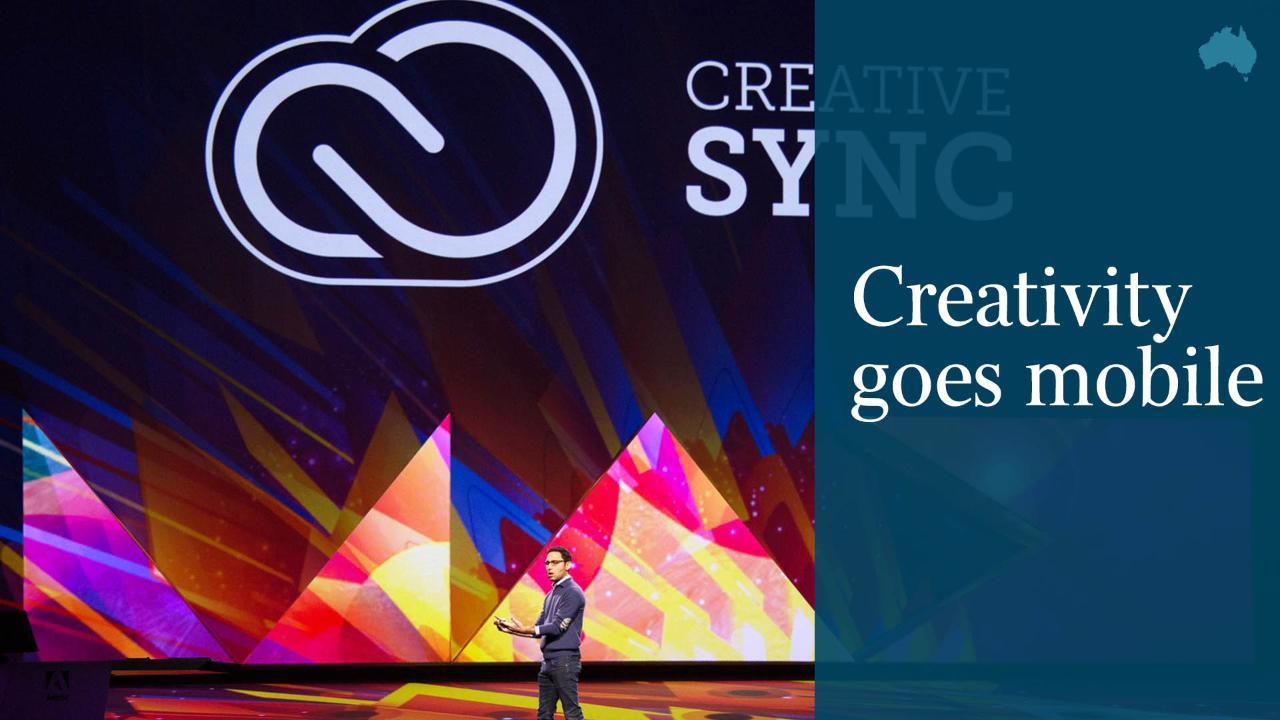Adobe MAX reveals new apps, device sharing technology
Software company Adobe already has a very sophisticated arsenal of media-manipulating apps, but where is it heading?

Software company Adobe already has a very sophisticated arsenal of media manipulating apps, but where exactly is it heading? I, like the 7000 others who piled into Los Angeles’ Microsoft Theatre for three days of Adobe MAX, am curious to know.
Some of MAX is keynotes. Most of it is like back-to-school: classes on everything from Photoshop, through to animation, software for 3-D printing and how to run a stock photo business.
The biggest news is Creative Sync, which can spread your Adobe files, photos, fonts, vector graphics, brushes, colours and settings across devices and apps. So you can create objects or edit photos on a tablet while travelling on a plane and, when you get home, resume editing on a desktop with the same photos, fonts and graphics.
Not only are these Creative Cloud libraries available across your devices; you also can share them with colleagues. Enterprises could build entire libraries of these assets for their staff. PlayStation, Uber and Fox Sports already use it.
So where exactly is Adobe heading? Into mobile. The movement of classic Adobe features into the mobile space is accelerating fast. Previous tablet editing apps such as Photoshop Touch had limited capabilities and were given the boot.
New devices such as Apple’s iPad Pro and the increasing popularity of Microsoft Surface and Windows touch screen devices prompted Adobe to revamp its mobile offering with apps for “professional editing on the go”. These were rolled out with considerable fanfare at MAX.
Photoshop Fix is key. You use your finger to adjust lighting, administer spot healing or fix red eye, and it’s easier to paint colours on to selected objects. You can send half-completed projects to desktop Photoshop as separate and editable layers to work on later.
Part of Fix, an ability to adjust face features, previewed briefly at Apple’s launch event last month. It drew some flak when Adobe showed how to add a smile to a model’s face. The liquefy feature creates face point nodes that stretch or compress. You can adjust a person’s jaw line, forehead or eyes, or give them a better nose job than any Beverly Hills cosmetic surgeon could.
But there are limits. I can’t add a smile to a photo of me where my mouth is firmly closed. So if Grandma is scowling in a family photo, you can’t convert her into a beaming smile. I fear the outcome will be posters featuring swags of people with perfect features who don’t actually exist. Adobe leaves such ethical choices to you.
An allied app called Mix offers sophisticated tools for manipulating multilayered designs. You can blend two photos together or give them different palette looks. Again, using my finger, I can cut out the background around an object and move layers around. When defining the object, the software intelligently interpreted where the boundaries were, so the outlines weren’t jagged.
On the desktop, all core Creative apps support touch on Microsoft Windows. And with Adobe Fuse you can transform designs with animation. You can make an avatar of a person, swap their clothing, shoes and morph facial features, and save this to Photoshop.
And Photoshop now contains a library of thousands of poses and animations. So the model who’s standing still can be transformed into someone running, into a kick boxer with their leg jutting out, or a dancer, and you can run through animations of each scenario to choose a pose you want, and change the result’s orientation. Save this again, and you have action images for posters.
There’s also Adobe Muse, an alternative to Dreamweaver, which creates fully functioning websites from designs, and the preview of the intriguing Project Comet, a vector design tool for creating interactive prototypes for phone, tablet and web versions of apps.
Adobe is updating its digital publishing platform to let developers push more sophisticated smartphone apps to the iTunes and Google Play stores.
Until now, Adobe-developed apps displayed static content, such as the content of PDFs. Now developers can use Adobe software to create smartphone apps that can be pushed fresh content at any time. So designers can pump out apps with more of the flexibility we see in mobile apps generally.
Chris Griffith is attending Adobe MAX in Los Angeles courtesy of Adobe.


